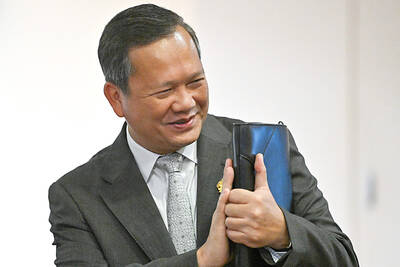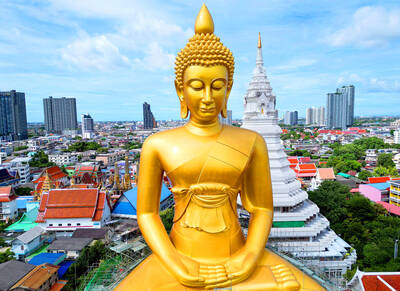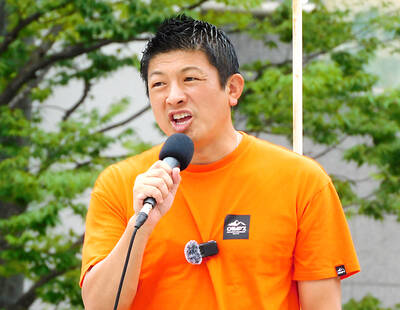Buttons were an invention waiting to happen. Since the dawn of time when early man draped himself in animal pelts, he has needed a way of opening and closing his clothing.
An exhibition in Paris pays tribute to this often unconsidered but essential item, showcasing about 1,500 of the rarest and most beautiful buttons amassed by French collector Loic Allio over 20 years.
Nobody knows when the first button emerged, but it was probably a piece of bone or shell, attached by string. Prehistoric buttons have been found in Egypt, Iran and Greece.
The earliest examples in the show include Chinese buttons in agate from the Han tombs dating back to the Dian kingdom (206BC to 220AD). Buttons tend to survive long after the fabric they were sewn onto has rotted away.
The golden age of the button was in 18th-century France, when they adorned redingotes and waistcoats. At the time of the French Revolution 1,000 workers were employed in the button industry.
The best buttons were exquisite miniature works of art, such as black and white or hand-tinted engravings, covered in glass and encased in metal circles.
Gift sets of fine buttons made by goldsmiths were considered suitable wedding presents.
Some were commemorative. The show has examples marking events as diverse as the first hot air balloon flight by the Mongolfier brothers in 1780, George Washington’s investiture, the abolition of slavery and the storming of the Bastille in Wedgwood-style blue and white porcelain.
It also has a few of the 18th century’s answer to pornography: buttons with erotic drawings that “libertines” wore concealed behind their lapels or inside their collars.
By the 19th century production became more industrialized, with the use of transfers replacing handpainted porcelain, although fine materials such as horn, tortoiseshell, silver, copper and ivory were still commonplace.
Buttons also reflected the main artistic movements of the day — Art Nouveau in the 1890s and Art Deco in the 1920s, when early plastics suddenly became fashionable.
The emergence of haute couture at the end of the 19th century created a big demand for unique, one-off buttons. In its heyday between the 1930s and 1950s there were more than 80 couture fashion houses in Paris, putting out four collections a year, providing work for 15 specialist suppliers, who also made belt buckles and hat pins.
Among the big names, now forgotten, were the writer Victor Hugo’s grandson Francois Hugo, who was a friend of Jean Cocteau, Max Ernst, Jean Arp and Pablo Picasso, and Henri Hamm, whose circle included the poet Guillaume Apollinaire and artists Amadeo Modigliani and Henri Douanier Rousseau.
The exhibition is open until Aug. 14 at the Mona Bismarck Foundation on the Avenue New York.

The military is to begin conscripting civilians next year, Cambodian Prime Minister Hun Manet said yesterday, citing rising tensions with Thailand as the reason for activating a long-dormant mandatory enlistment law. The Cambodian parliament in 2006 approved a law that would require all Cambodians aged 18 to 30 to serve in the military for 18 months, although it has never been enforced. Relations with Thailand have been tense since May, when a long-standing territorial dispute boiled over into cross-border clashes, killing one Cambodian soldier. “This episode of confrontation is a lesson for us and is an opportunity for us to review, assess and

The United States Federal Communications Commission said on Wednesday it plans to adopt rules to bar companies from connecting undersea submarine communication cables to the US that include Chinese technology or equipment. “We have seen submarine cable infrastructure threatened in recent years by foreign adversaries, like China,” FCC Chair Brendan Carr said in a statement. “We are therefore taking action here to guard our submarine cables against foreign adversary ownership, and access as well as cyber and physical threats.” The United States has for years expressed concerns about China’s role in handling network traffic and the potential for espionage. The U.S. has

IDENTITY: A sex extortion scandal involving Thai monks has deeply shaken public trust in the clergy, with 11 monks implicated in financial misconduct Reverence for the saffron-robed Buddhist monkhood is deeply woven into Thai society, but a sex extortion scandal has besmirched the clergy and left the devout questioning their faith. Thai police this week arrested a woman accused of bedding at least 11 monks in breach of their vows of celibacy, before blackmailing them with thousands of secretly taken photos of their trysts. The monks are said to have paid nearly US$12 million, funneled out of their monasteries, funded by donations from laypeople hoping to increase their merit and prospects for reincarnation. The scandal provoked outrage over hypocrisy in the monkhood, concern that their status

A disillusioned Japanese electorate feeling the economic pinch goes to the polls today, as a right-wing party promoting a “Japanese first” agenda gains popularity, with fears over foreigners becoming a major election issue. Birthed on YouTube during the COVID-19 pandemic, spreading conspiracy theories about vaccinations and a cabal of global elites, the Sanseito Party has widened its appeal ahead of today’s upper house vote — railing against immigration and dragging rhetoric that was once confined to Japan’s political fringes into the mainstream. Polls show the party might only secure 10 to 15 of the 125 seats up for grabs, but it is